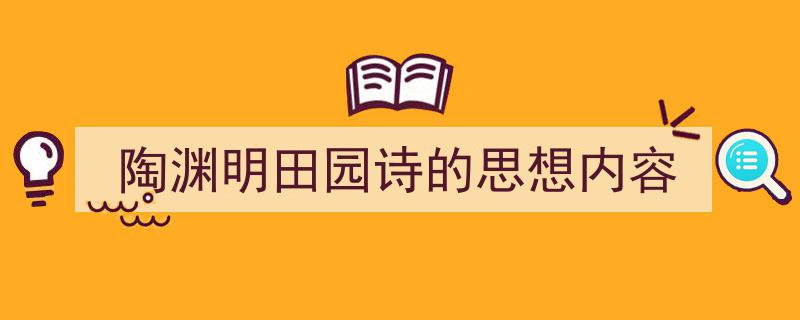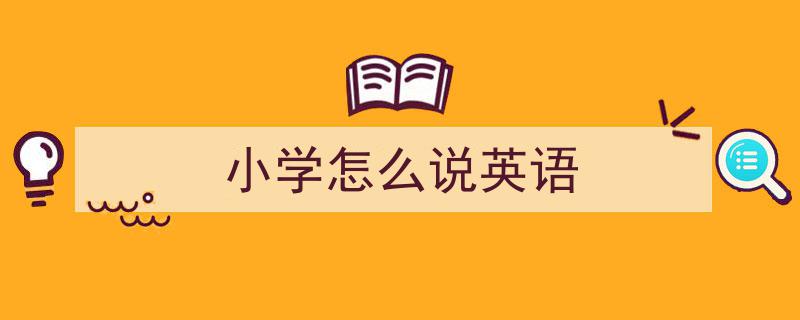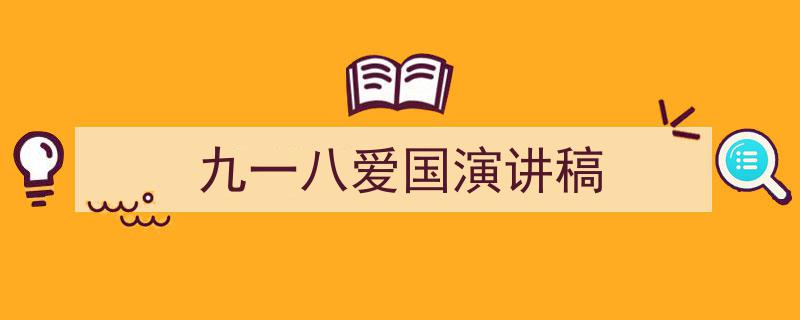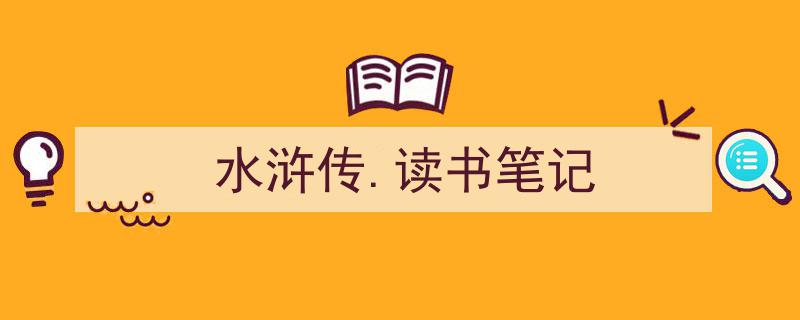欢迎来到58原创网网
手把手教你写《小学英语一般过去时练习》,(精选5篇)
更新日期:2025-08-18 15:45
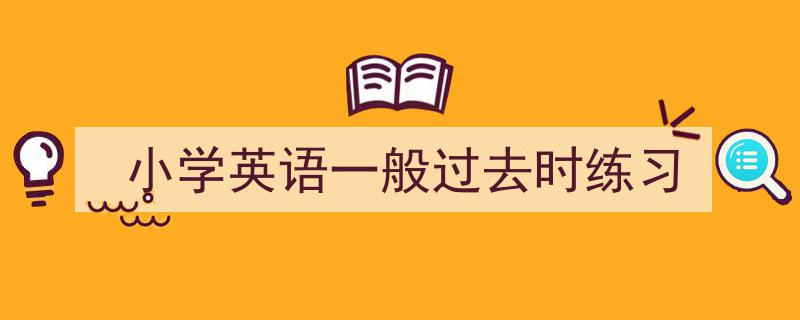
写作核心提示:
这是一篇关于小学英语一般过去时练习作文应该注意哪些事项的文章:
"小学英语一般过去时练习作文注意事项"
一般过去时是小学英语学习中的一个重要语法项目,它用于描述过去发生的动作或存在的状态。对于小学生来说,掌握并正确运用一般过去时是至关重要的。在练习写作文时,要注意以下几个关键事项,才能写出准确、流畅的句子:
"一、 动词变位要准确"
这是使用一般过去时的核心。需要注意以下几点:
1. "规则动词加 -ed:" 大部分动词在一般过去时态下需要加 "-ed"。 "注意拼写变化:" 以 "e" 结尾的动词直接加 "-d" (如:love -> loved, live -> lived)。 "双写结尾辅音字母:" 以辅音字母+y 结尾的动词,先变 y 为 i,再加 "-ed" (如:study -> studied, play -> played)。 "特殊发音:" 以 "辅音字母 + 元音字母 + 辅音字母" 结尾的动词,双写末尾辅音字母,但只改变元音字母的发音,过去式通常发 /t/ 音 (如:stop -> stopped, plan -> planned)。小学生需要多读多记。 2. "不规则动词需记忆:" 有相当一部分常用动词的过去式是不
小学英语四大时态使用规则及练习题
以下是具体知识点及使用规则:一、一般现在时定义:表示经常发生的动作、存在的状态或客观事实。结构:主语 + 动词原形(主语为第一、二人称及复数)主语 + 动词第三人称单数形式(主语为第三人称单数)标志性时间状语:always(总是)、usually(通常)、often(经常)、sometimes(有时)、every day(每天)等。用法:表示习惯性、经常性的动作。如:I get up at 7 o'clock every morning.(我每天早上 7 点起床。)表示客观真理、事实。如:The earth goes around the sun.(地球绕着太阳转。)表示主语的性格、能力等。如:She likes singing.(她喜欢唱歌。)
二、一般过去时定义:表示过去某个时间发生的动作或存在的状态。结构:主语 + 动词过去式标志性时间状语:yesterday(昨天)、last week(上周)、ago(…… 以前)、in 2020(在 2020 年)等。用法:表示过去发生的动作。如:He went to the park yesterday.(他昨天去了公园。)表示过去存在的状态。如:She was happy last night.(她昨晚很开心。)
三、一般将来时定义:表示将要发生的动作或存在的状态。结构:主语 + will + 动词原形主语 + be going to + 动词原形标志性时间状语:tomorrow(明天)、next week(下周)、soon(很快)、in the future(在将来)等。用法:表示将要发生的动作。如:I will go to Beijing tomorrow.(我明天要去北京。)表示计划、打算做某事。如:She is going to learn English.(她打算学英语。)
四、现在进行时定义:表示此时此刻正在进行的动作。结构:主语 + be 动词(am/is/are)+ 动词 - ing 形式标志性时间状语:now(现在)、look(看)、listen(听)等。用法:表示现在正在进行的动作。如:They are playing football now.(他们现在正在踢足球。)表示现阶段正在进行的动作(不一定此时此刻正在做)。如:I am reading a book these days.(这些天我在看一本书。)练习题一、填空题(25 道)1、She often _______ (go) to school by bike.2、My father _______ (work) in a factory.3、They _______ (play) football on the playground now.4、Look! The bird _______ (fly) in the sky.5、I _______ (have) breakfast at 7:00 every morning.6、He _______ (not like) math.7、_______ you _______ (read) books every day?8、What _______ she usually _______ (do) on weekends?9、Tom and Jack _______ (be) good friends.10、The earth _______ (go) around the sun.11、Yesterday, I _______ (go) to the park with my parents.12、She _______ (get) up late this morning.13、They _______ (have) a party last night.14、He _______ (see) a movie yesterday evening.15、My mother _______ (cook) delicious food for us yesterday.16、We _______ (visit) our grandparents last week.17、_______ you _______ (clean) your room yesterday?18、What _______ he _______ (do) last Sunday?19、I _______ (be) at home yesterday afternoon.20、She _______ (buy) a new dress yesterday.21、I _______ (go) to Beijing tomorrow.22、He _______ (will) play basketball after school.23、They _______ (be going to) have a picnic this weekend.24、She _______ (will) visit her aunt next week.25、_______ you _______ (go) to the zoo tomorrow?二、选择题(30 道)1、-_______ your father _______ a car? -Yes, he does.A. Do; have B. Does; have C. Is; having2、She _______ TV every evening.A. watch B. watches C. watching3、-What _______ they _______ now? -They are singing.A. do; do B. are; doing C. does; do4、Look! The boy _______ a kite in the park.A. fly B. flies C. is flying5、My sister _______ to school by bus every day.A. go B. goes C. going6、-_______ you like English? -Yes, I _______.A. Do; do B. Are; am C. Does; does7、He _______ football after school yesterday.A. play B. plays C. played8、-What did you do last weekend? -I _______ my homework.A. do B. does C. did9、They _______ a trip to Beijing last year.A. take B. takes C. took10、She _______ a letter to her friend yesterday.A. write B. writes C. wrote11、-_______ he go to the park yesterday? -No, he _______.A. Did; didn't B. Do; don't C. Does; doesn't12、We _______ a good time at the party last night.A. have B. has C. had13、He _______ to school late this morning.A. go B. goes C. went14、My mother _______ shopping yesterday afternoon.A. go B. goes C. went15、-What _______ she _______ for breakfast this morning? -She had bread and milk.A. does; have B. did; have C. is; having16、I _______ a new book next week.A. buy B. will buy C. am buying17、They _______ going to visit the museum tomorrow.A. is B. are C. am18、-_______ you going to play basketball tomorrow? -Yes, I _______.A. Are; am B. Do; do C. Will; will19、She _______ travel to Shanghai next month.A. is going to B. will C. Both A and B20、He _______ a party next Sunday.A. has B. will have C. is having21、-_______ will you do this evening? -I will watch TV.A. What B. Where C. How22、They _______ going to the park now.A. is B. are C. am23、Look! The children _______ games in the playground.A. play B. plays C. are playing24、My father _______ newspapers every morning.A. read B. reads C. is reading25、-_______ does your mother go to work? -By bike.A. What B. Where C. How26、She _______ a storybook now.A. reads B. is reading C. read27、They _______ to the zoo last Saturday.A. go B. goes C. went28、-_______ did you go yesterday? -I went to the library.A. What B. Where C. How29、He _______ English very well.A. speak B. speaks C. is speaking30、-_______ he like music? -Yes, he does.A. Do B. Does C. Is
Sara老师- 四种过去时态 十分钟搞定
Welcome back to one more English lesson.欢迎回到又一堂英语课。
I am Ananya.我是阿南娅。
In the last lesson, we looked at all the four present tenses in English.上一堂课,我们学习了英语中的四种现在时态。
In this lesson, we will look at all the four past tenses.这堂课,我们将学习四种过去时态。
Take a look at these sentences on your screen.请看屏幕上的这几个句子。
"I eat breakfast." Now, this sentence is in simple present tense, right?“我吃早餐。”这个句子用的是一般现在时,对吧?
Now, let's shift to the past.现在,我们把它改成过去时。
"I ate breakfast. I was eating breakfast. I had eaten breakfast. I had been eating breakfast. " Now, all these sentences, they talk about the past, but they are all a little different.“我吃了早餐。我当时正在吃早餐。我吃过早餐了。我当时一直在吃早餐。”这些句子描述的都是过去,但用法上略有不同。
If you ever felt confused about past tenses in English, this English lesson is just for you.如果你曾对英语的过去时态感到困惑,那么这堂英语课就再适合你不过了。
Now, past tenses are the most confusing among all the three tenses, and most of the mistakes happen while using past tenses.在所有时态中,过去时态最容易让人混淆,我们犯的大多数错误也都和它有关。
Today, I'll explain all the four past tenses in the easiest way possible with more examples, daily life situations, and also a quick quiz at the end to test your understanding.今天,我将用最浅显易懂的方式,结合更多实例和日常情景,为大家讲解四种过去时态,课程最后还有一个小测验来检验大家的掌握情况。
So come on, let's get started.好了,我们开始吧。
Let's begin with simple past tense.我们先从一般过去时开始讲起。
We use the simple past tense to talk about actions that happened and finished in the past.一般过去时用来描述在过去发生并且已经完成的动作。
They've got no relevance to the present at all.这类动作和现在没有任何关系。
Now, the most important thing, the time of the action is either mentioned or it's understood.最重要的一点是,动作发生的时间要么会明确提及,要么根据上下文就能明白。
The structure looks something like this.它的句子结构是这样的。
We use the subject plus the past form of the verb.主语加上动词的过去式。
Here are some examples.我们来看几个例子。
"I watched a movie last night." Take a look at the timeline.“我昨晚看了一部电影。”我们来看一下这个时间轴。
"I watched a movie last night." The action is over, it's finished, and I'm talking about it now in the present.“我昨晚看了一部电影。”这个动作已经结束,我是在当下谈论这件事。
So, "last night" is over.所以,“昨晚”已经过去了。
It means the action is completed and specific time is mentioned.这意味着动作已经完成,并且指明了具体的时间。
So "last night" is specific time, right?所以“昨晚”就是一个具体的时间,对吧?
Similarly, "She visited her grandmother yesterday. They played cricket on Sunday. We didn't go to the mall. Did you eat lunch? " Now, in the last two sentences, even if you don't say "yesterday" or "in the afternoon, " it's understood.类似的例子还有:“她昨天去看望了祖母。他们星期日打了板球。我们没去商场。你吃午饭了吗?”在后两个句子中,即使不加“昨天”或“下午”,听者也心知肚明。
It's not necessary to write.所以不一定要写出来。
So with simple past tense, time expressions are important.所以,在使用一般过去时的时候,时间表达很重要。
Words like yesterday, Sunday, last week, two days ago, in 2021, these are all time expressions.比如昨天、星期日、上周、两天前、2021 年,这些都是时间表达。
Now take a look at this sentence.我们再来看一个句子。
"Did you went to work yesterday?" Is this sentence correct or is it incorrect?“Did you went to work yesterday?”这个句子对吗?
Well, it's incorrect.嗯,这个句子是错的。
Don't use the past form when you use "did." So after "did, " we do not use the past verb.句子里用了“did”,动词就不要用过去式了。也就是说,“did”后面不能跟动词的过去式。
"Did" is always followed by a present verb.“Did”的后面要跟动词原形。
So the right sentence is, "Did you go to work yesterday?" So in short, if something started and ended in the past, it's done, we use simple past tense.所以正确的句子应该是:“Did you go to work yesterday?”总而言之,如果一件事在过去开始,也已在过去结束,我们就用一般过去时。
I hope that was pretty easy to understand.希望这部分内容不难理解。
Now let's understand how to use the past continuous tense.接下来,我们学习一下过去进行时的用法。
The past continuous tense is used to show that an action was in progress at a specific time in the past.过去进行时用来表示在过去某一特定时间点,某个动作正在进行。
The action has ended in the past, but this tense is specifically used to show that the action started in the past, continued for some time, and ended in the past itself.这个动作本身是在过去结束的,但该时态强调的是,动作在过去某一时间点开始,持续了一段时间,然后也在过去结束。
I hope you got it.希望大家明白这一点。
Here's the structure.它的句子结构是这样的。
We use the subject plus "was" or "were" plus the verb in the -ing form.主语,加上“was”或“were”,再跟上动词的-ing 形式。
Now, the important thing to note, we use "was" with subjects like I, he, she, or it, and we use "were" with subjects like you, we, or they.这里需要注意的是,主语是 I、he、she、it 时,用“was”;主语是 you、we、they 时,用“were”。
Right?明白了吗?
So if you're gonna use 'was' or 'were, ' it completely depends on the subject.所以,到底是用“was”还是“were”,完全取决于主语。
For example, "I was watching TV at 8:00 PM last night." Now, take a look at the timeline.比如,“我昨晚八点正在看电视。”现在,我们来看看这个时间轴。
I started watching TV at 8:00 PM, and maybe I watched it until 10:00 PM and then went to sleep.我晚上八点开始看电视,可能一直看到了十点才去睡觉。
So when we say "was watching TV, " it shows that the action of watching TV continued between 8:00 PM to 10:00 PM.所以,当我们说“was watching TV”时,就表示看电视这个动作从晚上八点持续到了十点。
In short, the action started at 8:00 PM and ended at 10:00 PM.简单来说,这个动作从晚上八点开始,到十点结束。
So what are we trying to show here?那么,我们想通过它说明什么呢?
We are trying to show that the action continued for some time in the past.我们想说明的是,这个动作在过去持续了一段时间。
Here are some more examples.再来看几个例子。
She was cooking when I called her.“我打电话给她时,她正在做饭。”
They were playing football in the rain.“他们当时正在雨中踢足球。”
We weren't sleeping when the phone rang.“电话响的时候,我们没在睡觉。”
What were you doing at nine o'clock?“你九点钟在做什么?”
Now, the easiest way to remember this tense: Think of this tense as a camera capturing something that was happening, not finished, at a moment in the past.要记住这个时态,最简单的方法就是把它想象成一台相机,捕捉的是过去某一刻正在发生、还未结束的动作。
I hope that was easy to understand.希望这一点不难理解。
Now, let's move on to something really tricky, and this really confuses many people: the past perfect tense.接下来,我们来学习一个比较棘手、也困扰了很多人的时态——过去完成时。
Now, people often get confused with this tense, but don't worry, it's actually very logical.很多人经常搞不清这个时态,但别担心,它其实非常有逻辑。
In the previous two tenses, the simple past and the past continuous, we talked about only one action.在前面讲的两个时态,也就是一般过去时和过去进行时里,我们只涉及了一个动作。
But what if you want to talk about two actions in the past?但如果你想描述过去发生的两个动作呢?
That's when we use the past perfect tense.这时候我们就要用过去完成时了。
The past perfect tense is used when you talk about two actions in the past, and you want to know which action happened first and which happened second.当你谈论过去发生的两个动作,并且想区分哪个动作先发生、哪个后发生时,就要用到过去完成时。
That's the main use of the past perfect tense.这就是过去完成时的主要用法。
Now, this is the most simple explanation for past perfect tense.关于过去完成时,这就是最简单的解释了。
That's all.就这么简单。
Just remember, two actions in the past, you have to use the past perfect tense.只要记住,当涉及过去的两个动作时,就必须用过去完成时。
Now, the structure looks something like this.它的句子结构是这样的。
We use the subject plus had plus the past participle, which means the verb in the third form.结构是:主语 + had + 过去分词,也就是动词的第三形式。
Take a look at this example.我们来看这个例子。
I had finished lunch before they arrived.在他们到达之前,我已经吃完午饭了。
Now, look at the timeline.现在,来看这个时间轴。
There are two actions in the past, finished lunch and the guest arrived.过去有两个动作:吃完午饭和客人来了。
So which action happened first?那么哪个动作先发生呢?
Finished lunch.吃完午饭。
And the second action is, the guest arrived.第二个动作是,客人来了。
So remember, when we talk about an action that happened further in the past, we use had plus the past participle.所以请记住,当描述两个动作中,那个发生在更早的动作时,我们要用 had + 过去分词。
In this case, had finished.在这个例子里,就是 had finished。
And for the action that is nearest to the present time, we use simple past.而对于那个相对更晚发生的动作,我们用一般过去时。
In this case, arrived.在这个例子里,就是 arrived。
Just remember the simple rule and you will never get confused where to use had in past perfect tense.只要记住这个简单的规则,你就再也不会搞混过去完成时中 had 的用法了。
Here are some more examples.再来看几个例子。
She had already left when I got there.我到那儿的时候,她已经离开了。
They had never seen snow before their trip to Kashmir.在去克什米尔旅行之前,他们从未见过雪。
We hadn't studied, so we failed the test.我们没复习,所以考试不及格。
Now, you tell me in the comments, in all these three sentences, which action happened first and which happened later?现在,请大家在评论区告诉我,这三个句子里,哪个动作先发生,哪个动作后发生?
In short, if you're talking about two things in the past, one happened before the other, use the past perfect tense for the first action.简而言之,当谈论过去的两件事,且一件发生在另一件之前时,先发生的那个动作就要用过去完成时。
With that, now let's move on to the last tense, the past perfect continuous tense.好了,我们接着来看最后一个时态:过去完成进行时。
Now, this tense also talks about two past actions, similar to the past perfect tense.这个时态也和过去完成时类似,同样涉及过去的两个动作。
We use this tense to talk about two completed actions in the past, but there's a little twist.我们用这个时态来谈论过去已完成的两个动作,但这里面有点儿不一样。
Out of the two actions, if we want to show that one action continued for some time and then ended, that's when we use the past perfect continuous tense.在这两个动作中,如果我们想强调其中一个动作持续了一段时间才结束,这时就要用过去完成进行时。
This tense is specifically used to show that an action started in the past, continued for some time, and ended before another past action or a specific time in the past.这个时态专门用来表示:一个动作从过去某时开始,持续了一段时间,然后在过去的另一个动作发生前或某个特定时间点前结束。
Take a look at this structure.我们来看一下它的句子结构。
We use the subject, plus we use had been, plus the verb in the -ing form.它的构成是:主语 + had been + 动词的-ing 形式。
For example, I had been working for five hours before I took a break.例如,我休息前已经连续工作了五个小时。
Take a look at the timeline.我们来看一下这个时间轴。
I started working at 9:00 a.m. I worked until 2:00 p.m.我从早上 9 点一直工作到下午 2 点。
So the action of me working continued for five hours.所以,我工作的这个行为持续了整整五个小时。
And then the second action, I took a break.接着是第二个动作:我休息了一下。
Here's one thing important to note.这里有一点需要注意。
We use time expression for the continued action to show the duration of the action.我们会用表示时间的词语来描述这个持续的动作,以说明它持续了多长时间。
Here are some more examples.我们再来看几个例子。
She had been crying all night before we reached.我们到之前,她已经哭了一整夜了。
They had been waiting for the train for over an hour.他们等这趟火车已经等了一个多小时了。
He had not been sleeping well for a few days.他已经好几天没睡好觉了。
In short, this tense is like telling a story.简单来说,这个时态就像在讲故事一样。
You know, something had been going on in the background for some time before something else happened.也就是说,在另一件事发生前,某个作为背景的事件已经持续了一段时间。
I hope that was pretty easy to understand.希望这部分内容不难理解。
All right, now let's do a quick recap.好了,我们来快速回顾一下。
We use simple past for a completed action, for example, "I watched a movie." We use the past continuous tense to talk about an action in progress at a past moment, for example, "I was watching a movie." We use the past perfect tense to talk about two past actions.一般过去时用于表示一个已完成的动作,例如,“我看了一部电影。”过去进行时用于描述在过去某一时刻正在进行的动作,例如,“我当时正在看电影。”过去完成时用于描述两个有先后顺序的过去的动作。
"I had watched the movie before it was released online." We use the past perfect continuous tense to talk about duration of an action before another past action.“在电影上线前,我就已经看过了。”过去完成进行时用于表示在过去另一动作发生前,某个动作持续的时长。
"I had been watching the movie for two hours before I fell asleep." I hope you got a better understanding of how to use all the past tenses.“在我睡着前,我已经连续看了两个小时的电影了。”希望大家现在对各种过去时态的用法更清楚了。
Now, come on, let's test your understanding.好了,来,我们来检验一下你的掌握情况。
It's quiz time.进入测验时间。
There are three sentences with blanks on your screen and what you have to do is choose the right option.屏幕上有三道填空题,请选出正确选项。
You can pause the video here, take a screenshot and write your answers in the comments.你可以在这里暂停视频、截图,然后在评论区写下答案。
I will try and correct them.我会尽量为大家批改。
All right, that's all for today.好了,今天的内容就到这里。
If you understand this lesson and feel more confident about using the past tenses, give this video a like, hit the subscribe button, and don't forget to share it with someone who's learning English just like you.如果你听懂了这节课,对使用过去时态也更有信心了,就请给本视频点赞、订阅,也别忘了分享给和你一样正在学习英语的朋友。
In the next lesson, I'm going to cover all the future tenses in the same manner.下节课,我将用同样的方式讲解所有的将来时态。
Until then, keep learning, keep practicing English.在那之前,请大家坚持学习、练习英语。
Bye for now.我们下期再见。
文章说明
本站部分资源搜集整理于互联网或者网友提供,仅供学习与交流使用,如果不小心侵犯到你的权益,请及时联系我们删除该资源。


